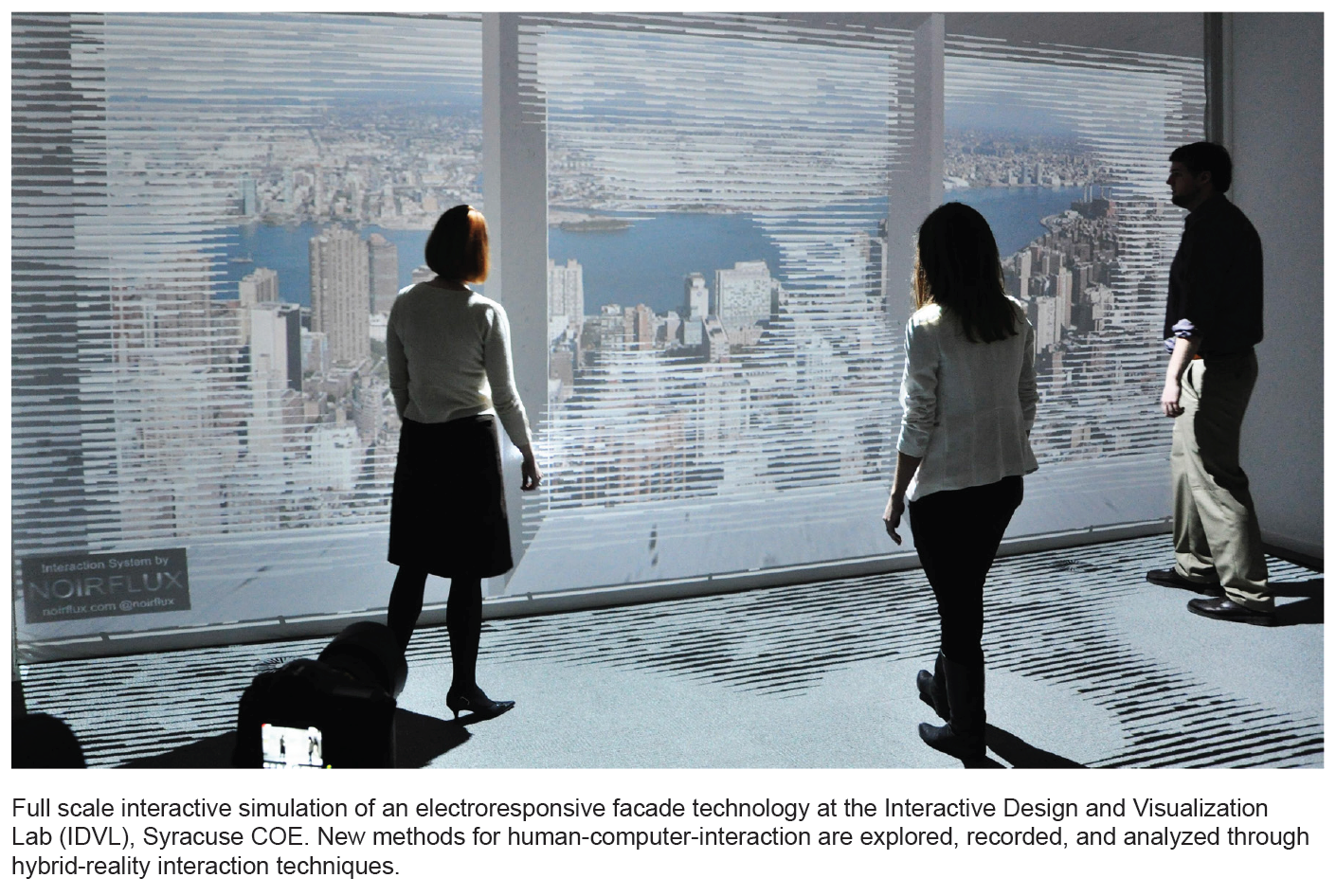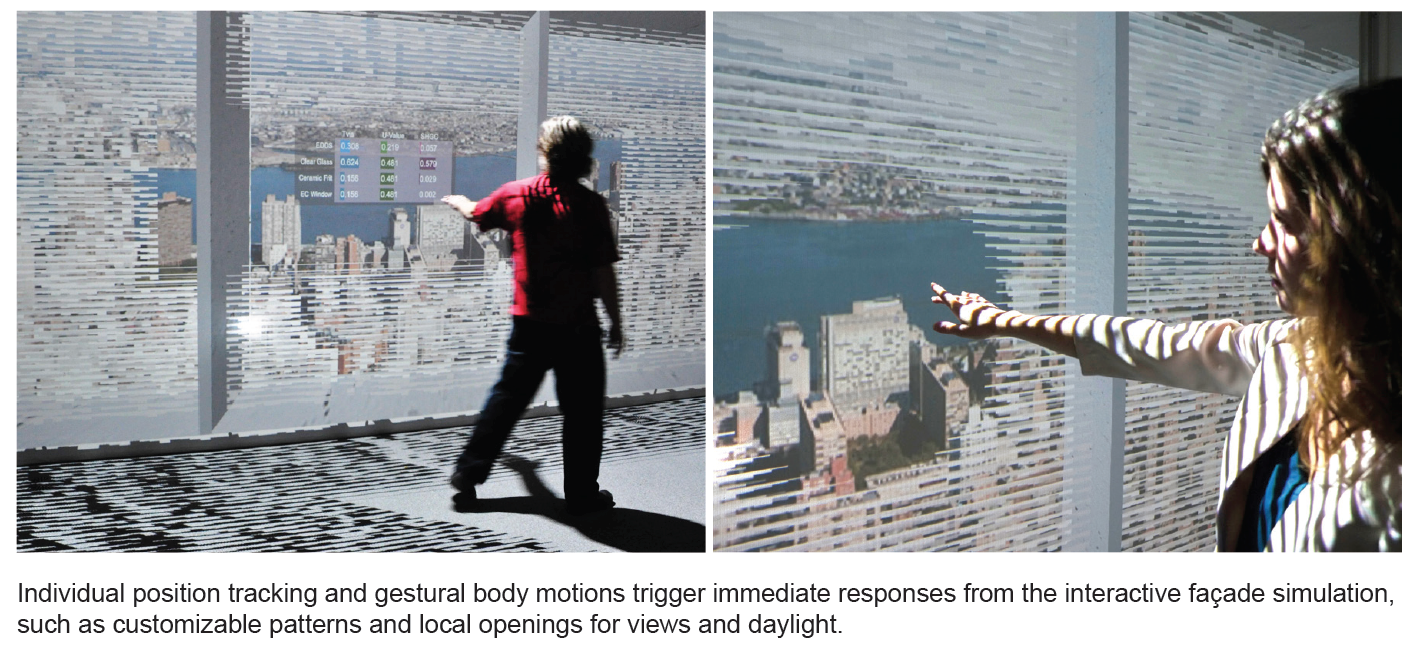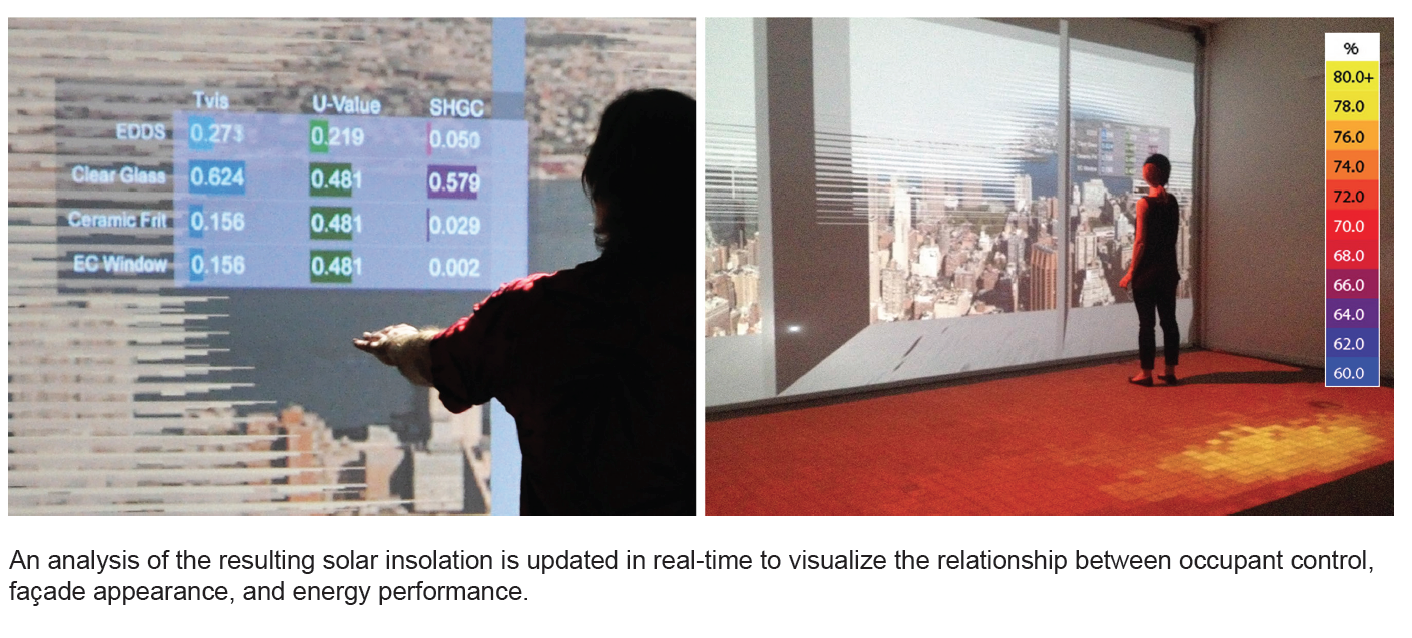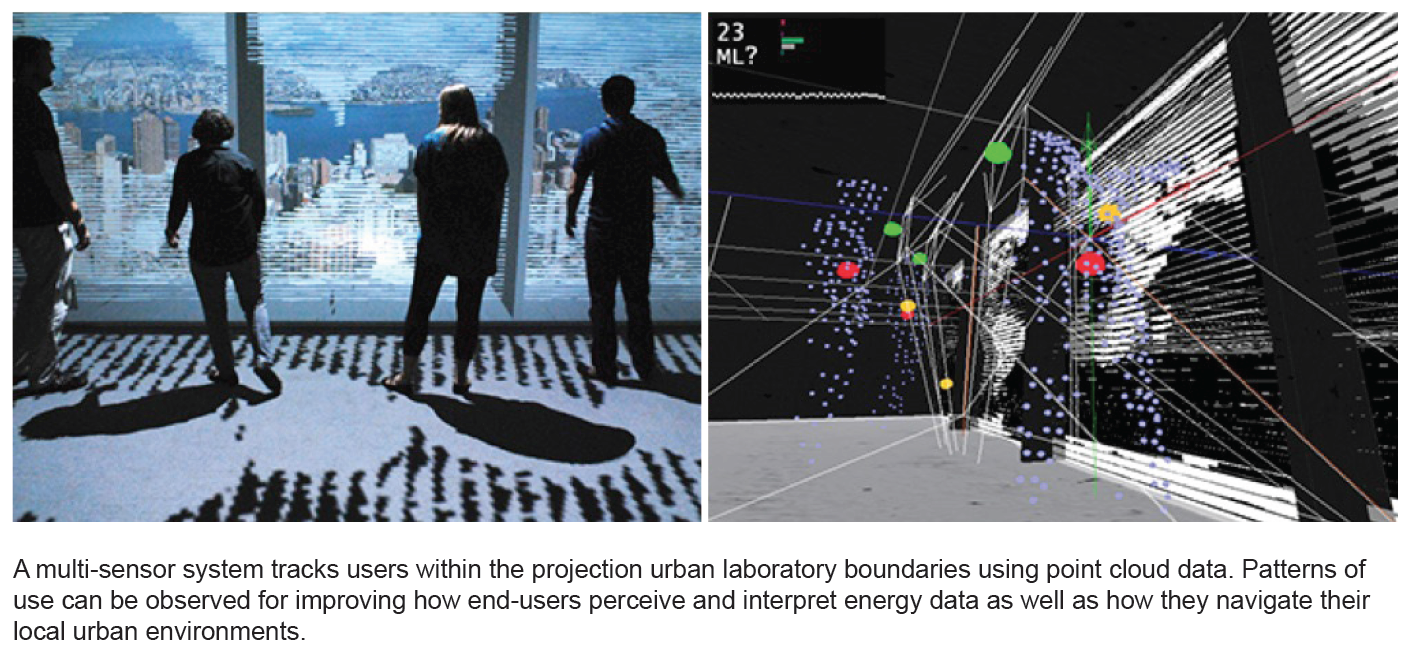 Designing computational frameworks to support innovation in next-generation bioresponsive building envelopes and systems.
Designing computational frameworks to support innovation in next-generation bioresponsive building envelopes and systems.
Emerging multi-functional materials present opportunities to fundamentally shift current expectations of building envelope functionality towards systems that leverage qualitative criteria and user interactivity as essential to their overall performance. Recognizing the challenges with existing single-scale models for testing the architectural potential of new materials, this research expands the criteria for building envelope performance to include qualitative measures that require alternative methods of performance assessment. The Interactive Façade research centers on computational design tools to support development of next-generation responsive building envelopes and technologies. It focuses on incorporating multi-user and multi-modal interactivity for increased perceptual performance capabilities as well as participant experiments. The computational tools developed incorporate greater geometric flexibility for testing alternative materials and scales of application. Further, they enable the exploration of a range of emerging materials and technologies for dynamic buildings that can respond to energy flows and human desires while facilitating various degrees of user engagement. In synthesizing performance criteria, this research explores the architectural variation, user empowerment, and adaptive decision-making enabled by new methods for visualizing and prototyping material behaviors.
Design Research Team:
- Bess Krietemeyer
- RPI/CASE
- Lorne Covington/NOIRFLUX
- RA: Kurt Rogler, Xuhao Wu





